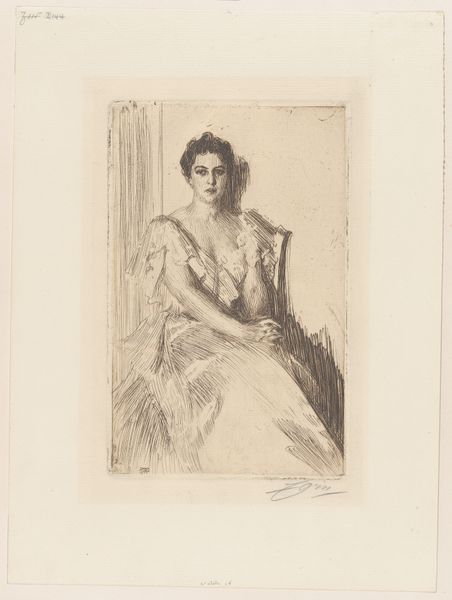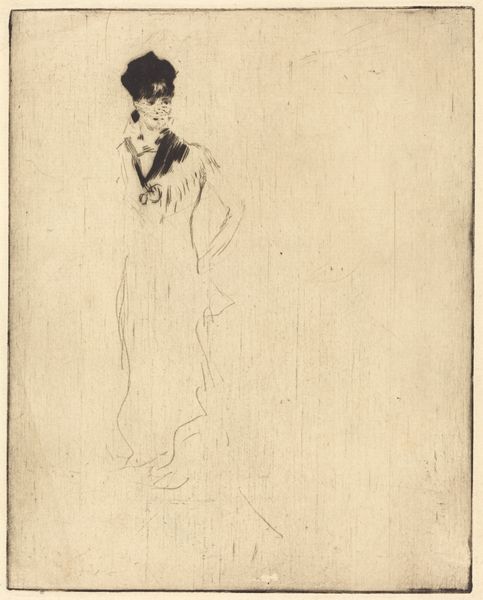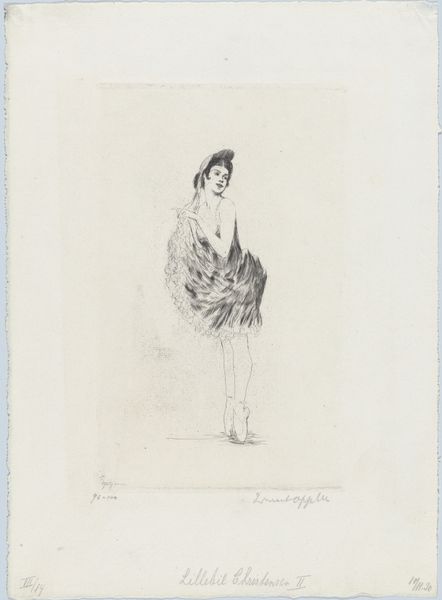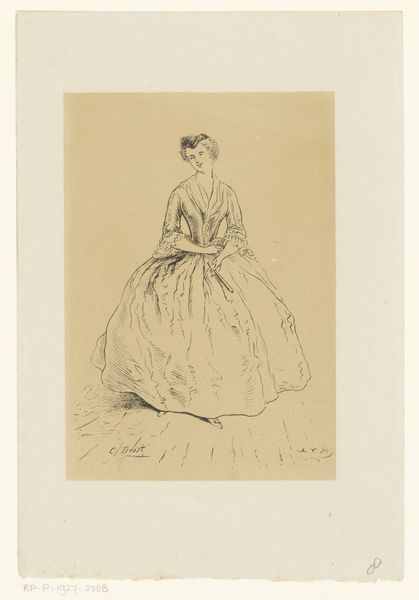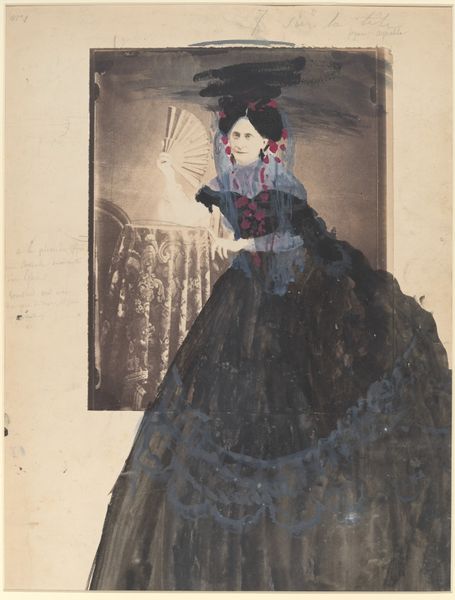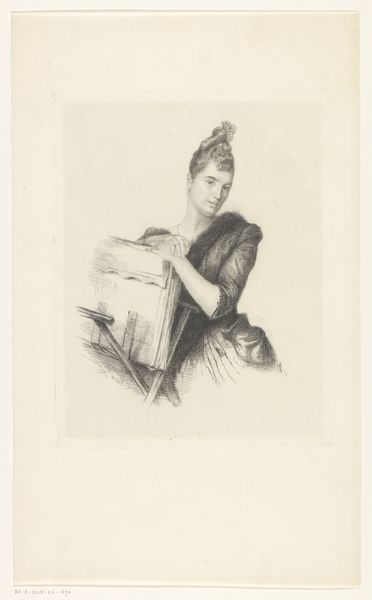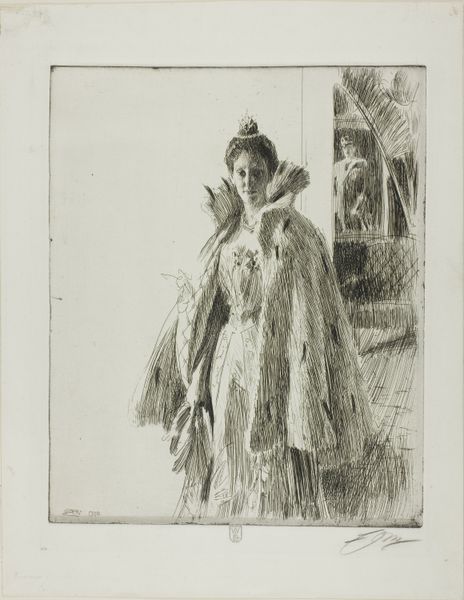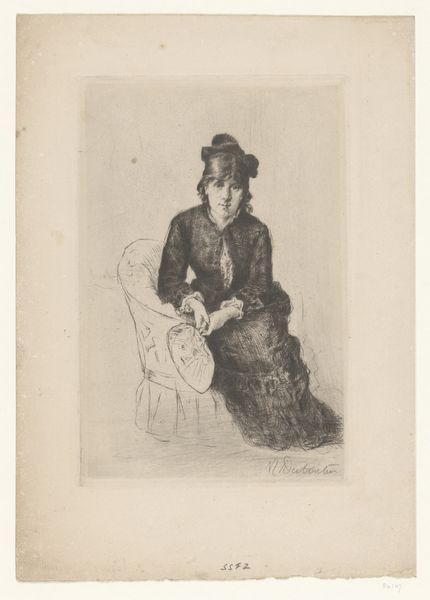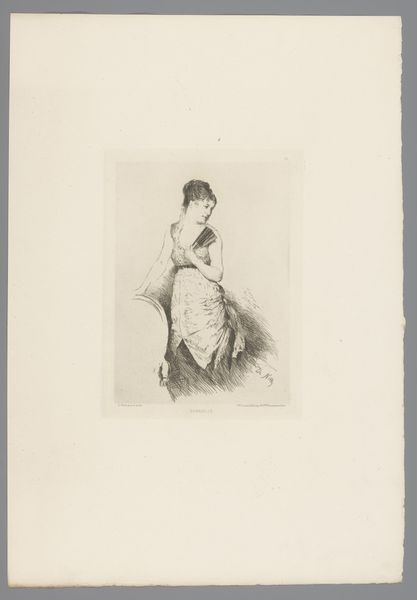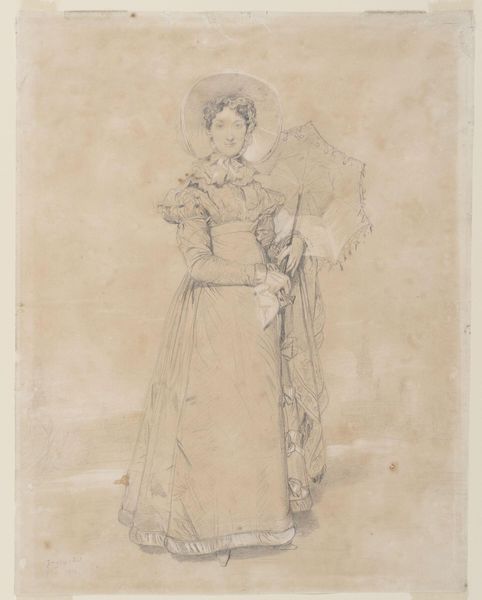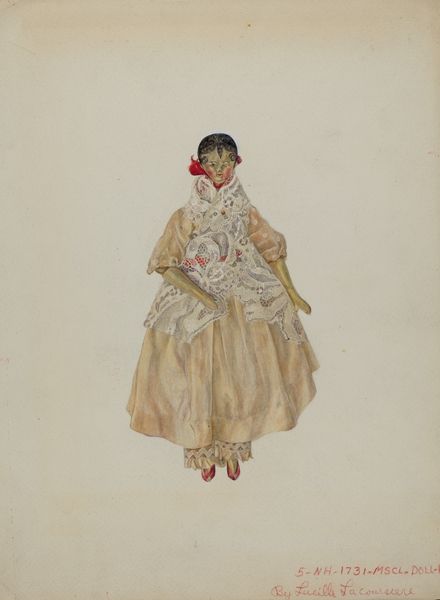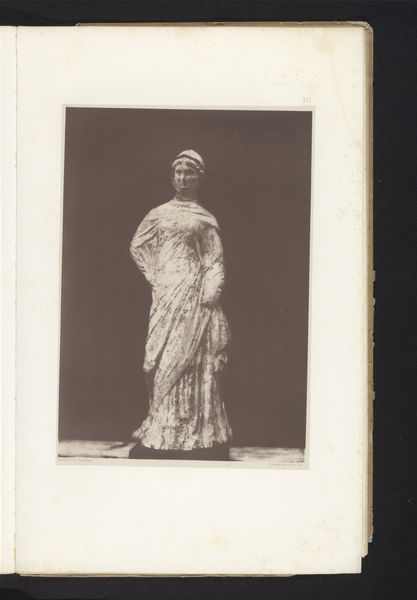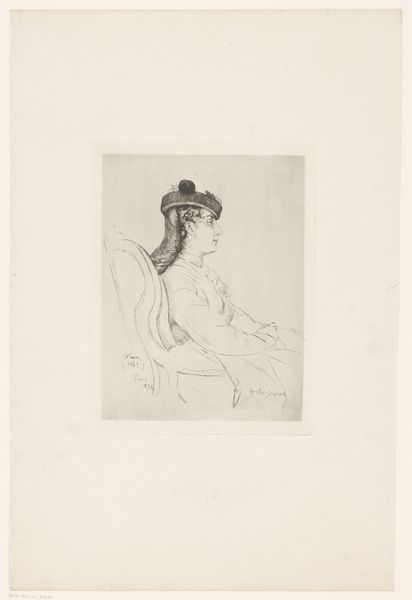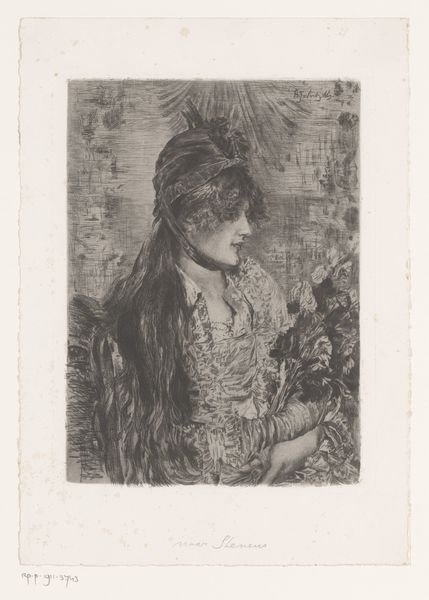
drawing, print, etching, paper
#
portrait
#
pencil drawn
#
drawing
# print
#
impressionism
#
etching
#
pencil sketch
#
paper
#
pencil drawing
Dimensions: 260 × 210 mm (image); 280 × 310 mm (plate); 325 × 470 mm (sheet)
Copyright: Public Domain
Editor: So this is Félix Bracquemond’s "Woman with a Fan," from around 1886. It's an etching, isn't it? There's something both intimate and distant about her gaze. What jumps out at you? Curator: The fan itself is almost a mask, a cultural artifact imbued with layered meanings. Fans, historically, weren't simply cooling devices; they were tools of flirtation, status symbols, and even encoded forms of communication in certain social circles. Doesn't the way she holds it seem almost… protective? What unspoken stories might it be concealing? Editor: Protective, definitely, I see that. Almost like it’s another layer of her dress. Could the fan maybe represent a barrier against the viewer? Curator: Precisely. Think of the female portrait throughout art history. How often are women displayed as passive objects of the male gaze? Here, the fan disrupts that dynamic. Bracquemond subtly grants her agency. Her eyes meet ours directly, yet the fan creates a sense of guardedness, of interiority. It becomes a potent symbol of female self-possession. What does her dress mean in that context? Editor: That's a new perspective for me! It never occurred to me how much power was held in these objects. About her dress – it’s patterned and flowing and makes her harder to look at directly. Her agency… does that relate to Impressionism and women artists in that period? Curator: It does. Artists like Berthe Morisot and Mary Cassatt challenged conventional depictions of women. But even male artists working within the Impressionist milieu, like Bracquemond here, began to explore more nuanced portrayals. The rise of Japonisme, with its emphasis on flattened perspective and decorative patterns, also influenced how artists conceived of portraying figures within a space. Editor: So, we're looking at more than just a pretty picture. There is symbolic complexity in everyday life. Curator: Exactly. Visual cues become like threads in a tapestry of cultural memory. We begin to appreciate art for its power to subtly encode so much human experience and cultural meaning into an image.
Comments
No comments
Be the first to comment and join the conversation on the ultimate creative platform.
